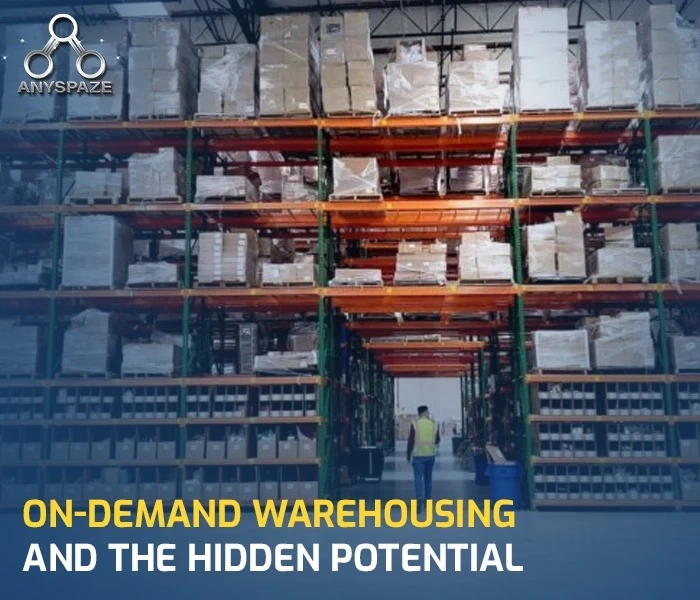An online business has a lot of moving components. Supply chain management is rarely the driving cause behind entering the eCommerce industry. Still, it is an essential jigsaw piece that impacts everything from customer delivery to inventory management.
ECommerce enterprises have a few options when it comes to eCommerce warehousing, fulfilment, distribution, and shipping. These are some of them:
● Self-fulfilment: When you maintain your inventory, packing boxes, and delivering orders all in one place.
● Dropshipping: When a retailer does not handle inventory and instead has the manufacturer manage the complete retail supply chain, transferring orders directly from the factory to the buyer.
● Outsourcing fulfilment to a business that specialises in keeping your goods and picking, packing, and shipping your orders from their warehouses is known as third-party logistics (3PL).
● On-demand warehousing: When you work with a technology business that hires warehouses with extra room to store your products.
By outsourcing fulfilment to a 3PL or on-demand warehouse firm, you may keep your product nearer to your final consumer while saving time and money without having to invest in your warehouses.
We’ll go over a few key differences and who each choice is best for in the sections below.
On-demand warehousing: What is it, and how does it work?
On-demand warehousing is a service that brings business with warehouses that have extra space with companies that need to keep inventory and fulfil orders on a short term basis.
In other words, on-demand warehousing refers to the practice of outsourcing fulfilment to a corporation that does not execute fulfilment services itself but instead hires others to do so.
On-demand warehousing solutions hire some small 3PLs, but others simply employ garages and other non-fulfilment-oriented structures.
Do you want to entrust your inventory — a critical component of your business — to strangers hired through an intermediary who doesn't own or run any warehouses?
What is the driving force behind the rise of on-demand warehousing?
Marketplaces like Uber and Airbnb use similar concepts to identify and rent out available vehicles or residences with space for a specific period. We've seen the "Uberization" of nearly everything, which has been a significant trend in the venture capital industry.
A shortage of warehouse space - Warehouse space is also a significant financial outlay. Warehouse slotting or organisation to maximise capacity while monetizing underused space is possible with on-demand warehousing. The best thing is that trash is reduced.
Success in eCommerce for the foreseeable future - More warehouse space is required as internet stores become more profitable. Even though demand forecasting isn't always accurate, eCommerce grows as a percentage of total retail sales. Sales trends are rising across verticals, as evidenced by eCommerce during COVID-19.
The desire for more warehouse flexibility - On-demand storage provides flexibility for seasonal products, former pop-up warehouses, e-commerce fulfilment space, and other handy, short-term demands for unoccupied space because there are no long-term commitments.
The requirement for quickness - On-demand warehousing can help enable same-day shipment, such as one-hour distribution, and make the last kilometre of delivery much easier to cover. Retailers can look for shared warehouse space within a few miles of their consumer base using a provider's network.
Why is on-demand warehousing so ineffective?
While on-demand warehousing can be helpful for people who need a specific storage place right away or Fortune 500 organisations with large enough finances to compete with Amazon, the average Shopify store is unlikely to need it.
Most eCommerce businesses prefer a partner rather than merely a platform to add additional inventory as needed. On-demand storage, unlike working with a 3PL, is more transactional and isn't as usual for a developing company looking for a long-term partner that can scale with them.
Here are some of the reasons why on-demand storage does not equal long-term, consistent eCommerce success:
1. Short-term solution = temporary space + open marketplace -
The chances of getting the same Uber driver twice are slim, and that Airbnb you stayed in might be a summer house for the renters and unavailable the next time you try to book it. On-demand warehousing is in the same boat. It's determined by what's available at the moment.
2. Inconsistent warehouses combined with a lack of competence lead to an increase in fulfilment problems-
Not all warehouses are made equal, nor do they all have prior fulfilment logistics experience. Some on-demand warehousing platforms aren't just for fulfilment centres. They may have warehouses with varying degrees of security, established processes, storage alternatives, packaging materials, carrier relationships, and more.
3. Poor customer service due to a lack of operational management and quality control -
On-demand warehousing causes a lack of visibility and uncertainty about what's going on inside warehouses because it doesn't operate fulfilment centres and merely provides a layer of technology. It's tough to maintain tight relationships with dozens, if not thousands, of warehouses if you can’t conduct a warehouse audit or test new processes in your facility before deploying them to the masses.
Scalability is essential.
Choosing a fulfilment system that expands with your company at each stage of growth, whether seasonal ebbs and flows or rapid growth, is critical if you want to build a long-lasting eCommerce brand. This means a partner who can help you scale from 10 to 1,000 orders per day, not just with ideal space but also with more tools, resources, and knowledge.
You control what happens with your products and orders at a tech-forward 3PL's fulfilment centre because they focus on the complete fulfilment process (s). You won't lose any space, and you'll be able to expand into other areas. Efficient 3PLs strive to improve their warehouses constantly, whether through batch picking or other supply chain improvements.
Source Url - https://www.anyspaze.com/blog-details/on-demand-warehousing-and-the-hidden-potential


